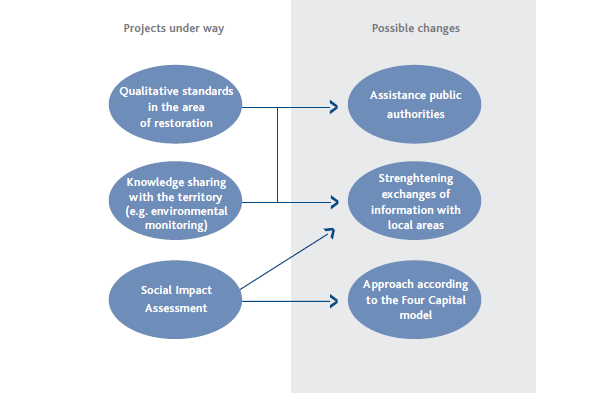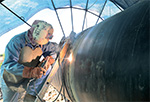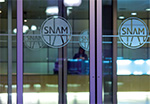The process of making new investments is geared toward managing group infrastructure execution activities, providing for coordination and control in managing investment projects and ensuring that project management methods and techniques are applied and that time, cost and quality targets are met. This process is capable of generating shared value for each phase (feasibility study, design, obtaining authorisations and licences, and execution) by locally sharing, at a reduced marginal cost, the outputs generated during the infrastructure implementation process, from the planning stage up to completion of the work.
MAKING NEW INVESTMENTS

Snam has implemented a model for evaluating social, economic and environmental impacts countrywide and locally, simultaneously with developing action plans in support of primary development projects. This methodology, known as Social Impact Assessment, is aimed at evaluating investment projects and provides an analysis of local stakeholders’ ex ante socioeconomic situation that is capable of estimating social and economic effects on the local area caused by the execution of new assets. In this regard, we note the possibility of implementing the Four Capital approach in dealings with local authorities and key stakeholders, as a local planning tool with high added value for decision-makers. It is precisely on exchanging knowledge continually that generating shared value between the Company and local areas is based today.

In the interventions carried out, Snam already provides in-depth information aimed at dealing with authorisation procedures. Such in-depth information (measurements, descriptions, environmental monitoring and studies), prepared at times through implementing partnerships with other entities, is made available to the relevant authorities (often as a result of requirements from the authorities, sometimes on a voluntary basis) and constitutes a significant source of knowledge sharing.
Basically, Snam shares knowledge with local areas that is acquired in those same local areas, providing government decision-makers with important information that aids their decision-making processes. Knowledge useful to Snam’s operations is drawn from the local areas where the Company operates, and can be given back in a structured manner. In this area, going forward, the Company intends to evaluate the sharing of the qualitative and quantitative technical know-how available (e.g. by providing satellite images or geo-referencing systems made in the siting phase) to improve knowledge of local areas. Snam is very willing to engage in dialogue with interested parties to support them in the most delicate phases of development projects and to provide as much information as possible to help with project coordination and management.
The Company has also achieved optimum operating standards in the area of restoration, partly thanks to the use of technologies that allow for minimising the impact on the local area and on the environment. Specifically, the group has conceived a cutting-edge methodology over the years for morphological restoration. As proof of this, together with the Ministry of Environment, Snam has formalised some standards and facsimiles for the management of local post-completion activities. This modus operandi could be followed locally, including in other areas of responsibility. The main opportunity for creating shared value lies precisely in this point: structuring and systematising information exchanges locally will allow for building a solid relationship based on mutual trust. Snam may share know-how and best practices on restoration with local entities via direct assistance aimed at replicating locally certain solutions implemented with regard to infrastructure, in order to better manage the local structure. In addition, systematically sharing outputs deriving from pre-completion and post-completion monitoring will provide local areas with knowledge that is potentially useful at the local level. Cooperating with local areas could lead to preparing guidelines, providing training sessions or making available true advisory support.

Snam is aware that in the asset building process there is ample room for generating shared value, especially in connection with highly complex projects. Industrial ecology or industrial optimisation activities in the local areas where Snam is present with its subsidiaries, capable of improving the production capacity and efficiency (energy-wise and otherwise) of economic entities established on a local scale in existing supply chains, are possibilities for which feasibility studies could be done.
Lastly, developing partnerships with surface and subsurface users may pave the way for the implementation of joint monitoring and coordination procedures. Snam believes it is important to strengthen relations with other subsurface users (e.g. coordination and optimisation of excavation activities) to strengthen communication inputs with those doing the work and to intervene preventively for infrastructure safety.



